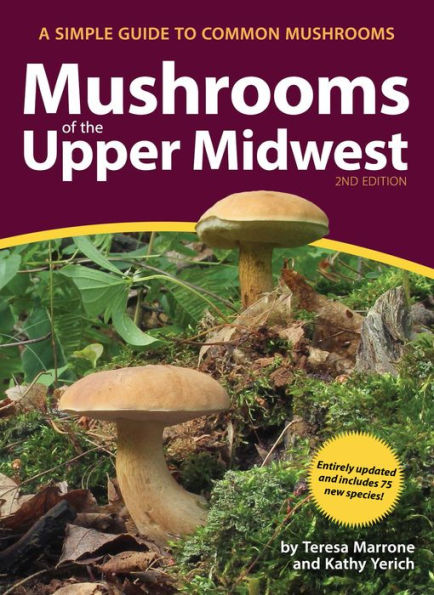Begin to Identify Mushrooms with this Great Visual Guide for the Upper Midwest! Mushrooming is a popular and rewarding pastime—and it’s one that you can enjoy with the right information at hand. Mushrooms of the Upper Midwest is the field guide to get you started. The region-specific book utilizes an innovative, user-friendly format that can help you identify mushrooms by their visual characteristics. Hundreds of full-color photographs are paired with easy-to-understand text, providing the details to give you confidence in the field. The information, written by foraging experts Teresa Marrone and Kathy Yerich, is accessible to beginners but useful for even experienced mushroom seekers.
Learn about nearly 400 species of common wild mushrooms found in the Midwestern states of Illinois, Indiana, Iowa, Michigan, Minnesota, North Dakota, South Dakota, and Wisconsin. The species (from Morel Mushrooms to Shelf Mushrooms) are organized by shape, then by color, so you can identify them by their visual characteristics. Plus, with the Top Edibles and Top Toxics sections, you'll begin to learn which are the edible wild mushrooms and which to avoid.
Get this field guide, jam-packed with information, and start identifying the mushrooms you find.



